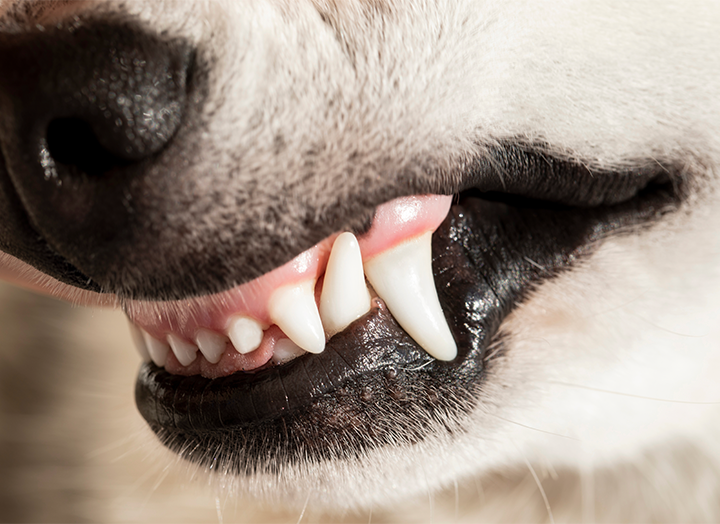[vc_row][vc_column][vc_column_text css=””]
If you’re a dog owner, there’s a chance you may have been warned about the risks of feeding raw bones to your pet. If you find yourself wondering “are raw bones good for dogs”, we have some great news for you – they are! While it’s certainly important to be aware of any hazards, raw bones actually do a lot more good than bad for your furry friend. From improved dental health to mental stimulation, here is our guide to the benefits of raw bones for dogs.
[/vc_column_text][/vc_column][/vc_row][vc_row][vc_column][vc_row_inner content_placement=”middle”][vc_column_inner width=”1/2″][vc_column_text css=””]
Why give your dog raw bones anyway?
We see it everywhere. Dogs enjoying a good old bone and chewing the day away with a smile on their face. Before we get into the benefits, we want to take a closer look at why dogs love raw bones, why they like to chew and the importance of the activity.
There’s been a connection between raw bones and dogs since the beginning of time and as domesticated carnivores, that instinct to chew hasn’t changed one bit! This action of gnawing away is still very much ingrained in them and satisfies the urge for fun. Not providing them with something to chew on may turn their attention to something else, like your couch or even favourite pair of sneakers (yikes).
With that said, it’s important to note that not every bone is safe, but choosing one that’s right for your dog is easy![/vc_column_text][/vc_column_inner][vc_column_inner width=”1/2″][vc_column_text css=””]
The four main benefits of raw bones.
From improved dental health to mental stimulation, there are several benefits to feeding raw bones to your dog, but right now we’ll cover four core ones. Raw bones for dogs are not only bursting with nutritional value but are also great stimulants to help your furry friends thrive.
[/vc_column_text][vc_row_inner content_placement=”middle”][vc_column_inner width=”1/2″][vc_column_text css=””]
No toothbrush? No problem!
Did you know chewing on a raw bone increases your dog’s oral hygiene? This is just one of the benefits of raw bones for dogs! Better oral hygiene leads to better overall wellness and longevity in our favourite four-legged friends. While there are alternatives for cleaning a dog’s teeth, like toothpaste or water and food additives, not all pups may be receptive to these methods. Some prefer a classic raw bone, as this has been the natural way for dogs to keep their teeth strong and healthy for centuries. When they chew a raw bone, they are also preventing plaque build-up. It’s the easiest way to keep their gums nice, clean, and healthy.[/vc_column_text][/vc_column_inner][/vc_row_inner][vc_column_text css=””]
While we believe that diets like ours (those that are high in fresh meats and low in unnecessary carbohydrates) are the simplest way to see improvement in dental health, we strongly encourage pet owners to introduce raw bones as an additional positive measure. After all, a happy and healthy dog means a happy owner, too.
For puppies, seniors, and dogs with dental health issues, it is best to first check with your holistic veterinarian to determine which bone is best for your pup.
[/vc_column_text][vc_row_inner content_placement=”middle”][vc_column_inner width=”1/2″][vc_column_text css=””]
Mind games to munch on.
Just like us, dogs are susceptible to boredom. While we don’t always have time to play or take them for a long walk, feeding a dog raw bones can help to alleviate any boredom and get your dog’s tail wagging. It keeps them stimulated both mentally and physically, while also preventing them from chewing on something more valuable, like a chair leg or parts of the wall (yes, that really happens). If you’re interested, try giving your dog a recreational bone like a beef knuckle. They’re designed to help your dog work their jaw without being consumed.[/vc_column_text][/vc_column_inner][/vc_row_inner][vc_row_inner content_placement=”middle”][vc_column_inner width=”1/2″][vc_column_text css=””]
Beauty is in the eye of the boneholder.
Another one of the benefits of raw bones for dogs is that they can encourage better skin and coat health through a variety of minerals that they contain. The marrow and cartilage are also great sources of collagen, which help with your dog’s skin elasticity and joint health. If you’ve already been feeding your dog bones, raw diets are an easy next step. Read From Bland to Bold: Transitioning your Pet to Raw to learn more about making the change.
Bones benefit bones.
Just like humans, calcium is vital to a dog’s bone strength and structure. But did you know that it has other benefits, too? Homes Alive Pets says that calcium helps with blood coagulation, muscle contraction, and has a notable impact on vision and heart function.
If you’re wondering how much raw bone to feed your dog, giving them a few per week is a great way for them to get a good amount of calcium in their diet. Just make sure you’re combining all this calcium with phosphorus though. Together, the two minerals help in the maintenance of your dog’s skeletal structure![/vc_column_text][/vc_column_inner][vc_column_inner width=”1/2″][vc_column_text css=””]
Are raw bones safe for dogs?
To reiterate what we said previously, raw bones for dogs are not as dangerous as some people say, but that’s not to say you shouldn’t still be smart about feeding them to your furry friend. There are still potential risks, as some are safer than others while raw bones for puppies or dogs with dental problems may cause damage to their teeth by chewing them.
Make sure to never feed your pet a cooked bone, as they are fragile and can break and get stuck in their mouth or throat. With that said, it is always a great idea to supervise your pet when feeding them a raw bone.
[/vc_column_text][vc_row_inner content_placement=”middle”][vc_column_inner width=”1/2″][vc_column_text css=””]
What raw bones can I give my dog?
Dogs are all different and so are their reasons for chewing! At Bold by Nature, we provide Raw bones and toppers for dogs of all sizes in two varieties: Raw Meaty Bones (RMBs) and Recreational Bones.
Raw meaty bones.
Raw Meaty Bones are bones that are covered in thick layers of muscle and connective tissue, like turkey necks, chicken necks, and chicken feet. In the wild, dogs, cats and even ferrets require bones to provide nutrients crucial to overall health which is why we include RMBs in all of our Bold by Nature raw recipes. If you find yourself wondering, “can dogs eat raw bones”, well the answer is yes! Raw meaty bones are the ones that your dog can enjoy from start to finish.
To learn more about these kinds of bones, feel free to read our blog raw chicken bones for dogs.
[/vc_column_text][/vc_column_inner][/vc_row_inner][vc_row_inner content_placement=”middle”][vc_column_inner width=”1/2″][vc_column_text css=””]
Down to the (Recreational) Bone.
Recreational bones are generalized as weight-bearing bones found in the legs of large, grazing animals like cows, deer, and sheep. Examples of Recreational Bones include bones like beef knuckles and marrow bones. RMBs are meant to be fed in situations where the animal may consume the entire bone whereas recreational bones are meant to only be chewed on and not entirely consumed. Recreational Bones are perfect for keeping pets entertained for long periods of time. To learn more about these kinds of bones, feel free to read our blog raw beef bones for dogs.
Both types of bones provide crucial oral and mental stimulation so take out a delicious freezer-ready treat and let them chew on it while you’re hanging around the house.
How long can you keep a raw dog bone?
Since edible bones typically have bits of meat on them, you should treat them as you normally would raw meat. Whenever your dog isn’t actively chewing on it, we recommend putting it in the freezer to prevent it from spoiling or throwing it out completely!
[/vc_column_text][/vc_column_inner][vc_column_inner width=”1/2″][vc_column_text css=””]
Do’s and don’ts of raw bone feeding.
There’s a strong connection between raw bones and dogs, but make sure to keep these do’s and don’ts in mind!
DO ensure you’re supervising at all times when feeding a raw bone.
DO get an appropriately sized raw bone for your dog. Make sure it is big enough that they can’t swallow it whole. A raw meaty bone, like a chicken foot, is edible and safe to consume while a recreational bone like a beef marrow bone is recreational and meant for mental stimulation, jaw exercise, and dental health.
DO allow your dog to gnaw on a raw beef bone, but do not allow them to consume the entire thing. Once the bone has been relieved of all its meat and Bold flavour, take it away and throw it out.
DON’T cook the bone. If a dog bone is raw, it can splinter and do damage to your dog’s insides if they chew on it.
DON’T give raw bones to your dogs that are experiencing dental issues without getting the green light from your holistic vet first. This also applies to raw bones for puppies.
[/vc_column_text][/vc_column_inner][/vc_row_inner][vc_row_inner content_placement=”middle”][vc_column_inner width=”1/2″][vc_column_text css=””]
How do I know how much raw bone to feed my dog?
If you want to give your dog raw bones, we typically recommend offering bones once or twice a week.
The raw bone’s connected to the meal bone!
When it hits mealtime (your dog’s favourite time of day), you can rely on our delicious Bold by Nature raw pet food recipes to fulfil their tastiest cravings. A great complementary meal for pets who already enjoy dog bones, raw food is made with ground raw bones, ensuring they get a mouthful of vitamins and minerals with every bite.
To explore everything that Bold by Nature has to offer for your dog, visit raw dog food in Canada.[/vc_column_text][/vc_column_inner][/vc_row_inner][vc_column_text css=””]
Where to get raw bones for dogs or other Bold by Nature products.
You can purchase Bold by Nature bones and raw recipes either online or at your local retailer. If you’re not sure where to buy raw pet food, you can use our location finder to explore retailers near you that carry Bold by Nature products.
[/vc_column_text][/vc_column][/vc_row]













